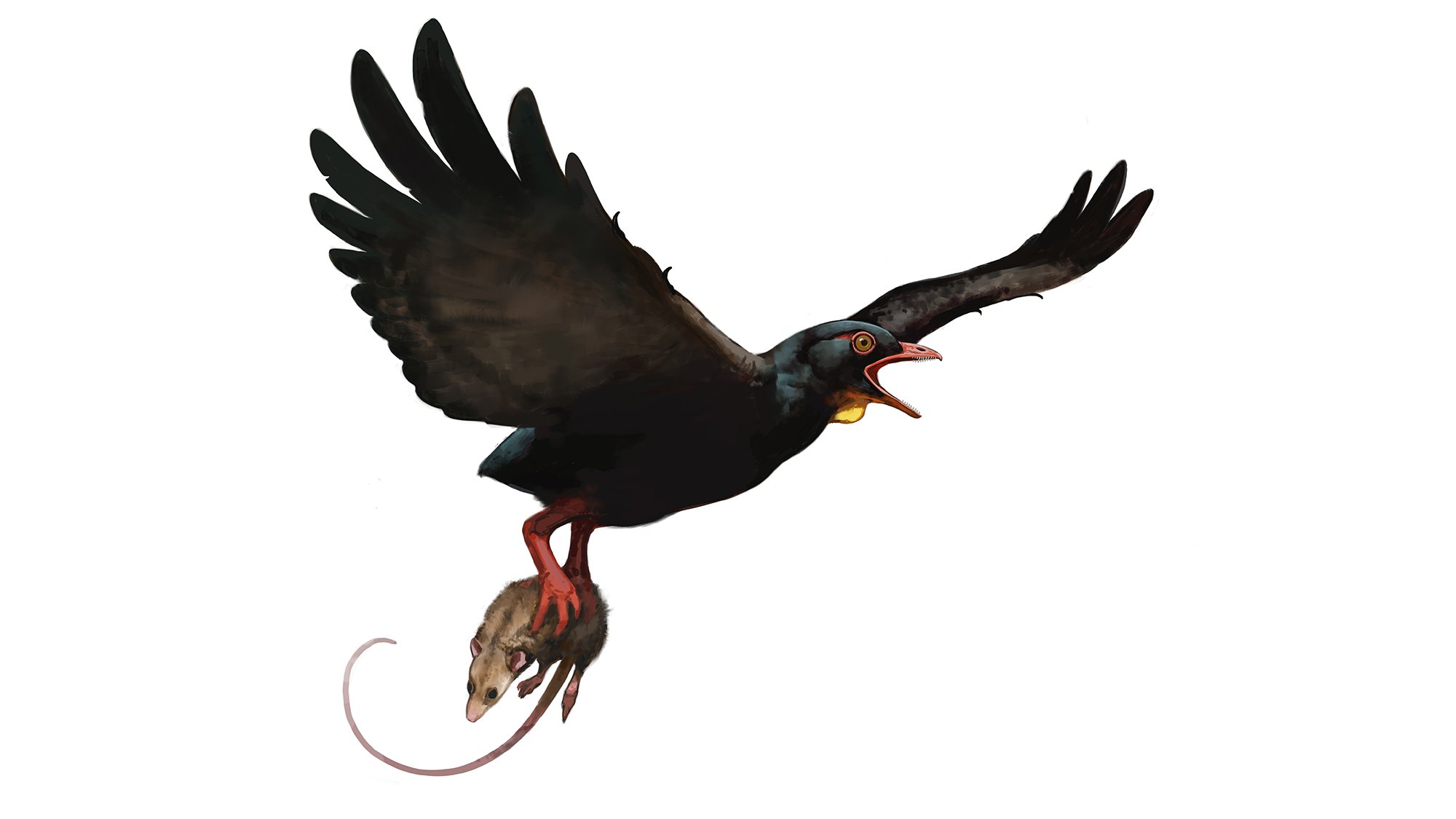

Some of Earth’s most famous dinosaurs once called what is now the western United States home. However, dinosaurs including the mighty Tyrannosaurus rex and sturdy Triceratops, were not the only types of animals roaming the region 68 million years ago. They lived alongside two newly described species of bird called Avisaurus darwini and Magnusavis ekalakaenis. These early avians were about the size of a hawk and had strong enough feet to capture and carry off prey–possibly even small dinosaurs. The new species are described in a study published October 9 in the journal PLoS ONE.
“Based on clues in their foot bones, we think these birds would have been able to catch and carry prey, similar to what a modern hawk or owl does,” study co-author and University of Chicago PhD student Alex Clark said in a statement. “While they might not be the first birds of prey to ever evolve, their fossils are the earliest known examples of predatory birds.”
[Related: ‘Deep-snouted’ tyrannosaur fossils uncovered at construction site.]
The three fossils in this new study were recently uncovered in the Hell Creek Formation. This fossil-rich area in present day Montana, North Dakota, and South Dakota was formed by ancient rivers that flowed from the Rocky Mountains into a large interior seaway. It was home to T. rex, triceratops, the stocky and fiesty Ankylosaur, and more before most dinosaurs went extinct about 68 million years ago.
When Clark first saw these fossils, they didn’t immediately jump out as something special. All three were just the part of the foot bone where the toes attach called the tarsometatarsus. The fossils had also been found on their own, without other body parts like claws or skulls. While the bones were pretty big for bird tarsometatarsi, they were still only about the size of an adult human thumb. Still, these bones held a ton of very useful data for the team.
“Every nook and cranny and bump that occurs on a bone can tell us something about where the muscles or tendons attached and how big they were,” said Clark.

There was a particularly noteworthy bump on these bones–a muscle attachment point called a tubercle. The tubercle was larger and farther down than in most birds.
“When we see tubercles this large and this far down in modern birds, they’re in birds of prey like owls and hawks,” said Clark. “That’s because when they hunt and pick up their prey with their feet, they’re lifting proportionally heavy things and holding them close to their bodies to stay as aerodynamically efficient as possible. These fossil ankle bones look like they’re built to do something similar.”
In the study, Clark and the team conducted several biomechanical analyses comparing the fossil foot bones to those of a variety of modern birds. According to Clark, the muscles of the bone and ankle work together like a lever. Comparing how far down the bone the muscle attaches can give scientists a solid idea of how strong the bone would have been and how it moved. The analyses revealed these feet would have been strong enough for these birds to pick up small mammals and potentially baby dinosaurs.
[Related: The first true flying vertebrates walked before they could soar.]
From the three foot bones, the team described two species new to science that are bigger than other known birds from the Late Cretaceous. Avisaurus darwini is named after Charles Darwin estimated to have weighed over 2.2 pounds. Magnusavis ekalakaenis is named in honor of Ekalaka, Montana, where the fossil was first uncovered. It is possible that the third bone may belong to another species, but it is very degraded and has made it difficult to tell.
All of these birds are members of the group called Avisaurids. They also belong to a larger group of birds called the enantiornithines. They date back to the Cretaceous Period and went extinct with most of their fellow dinosaurs when an asteroid struck the Earth near present day Mexico about 68 million years ago.
“These discoveries have effectively doubled the number of bird species known from the Hell Creek Formation and will be critical for helping us to better understand why only some birds survived the mass extinction that wiped out T. rex and the avisaurids described here,” Jingmai O’Connor, a study co-author and associate curator of fossil reptiles at the Field Museum in Chicago, said in a statement. “Alex has done a superb job with being able to extract so much incredible ecological information from just a single bone.”
